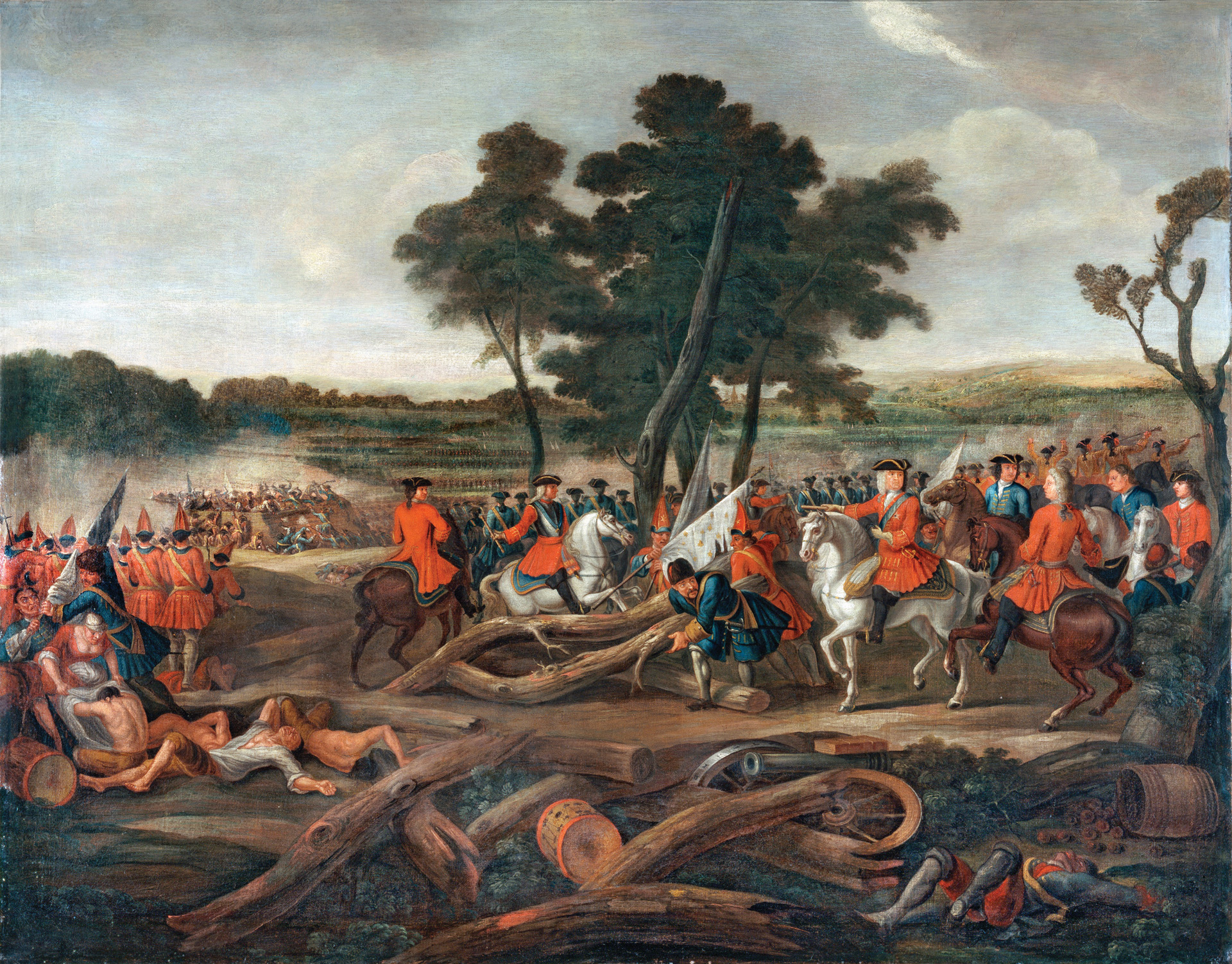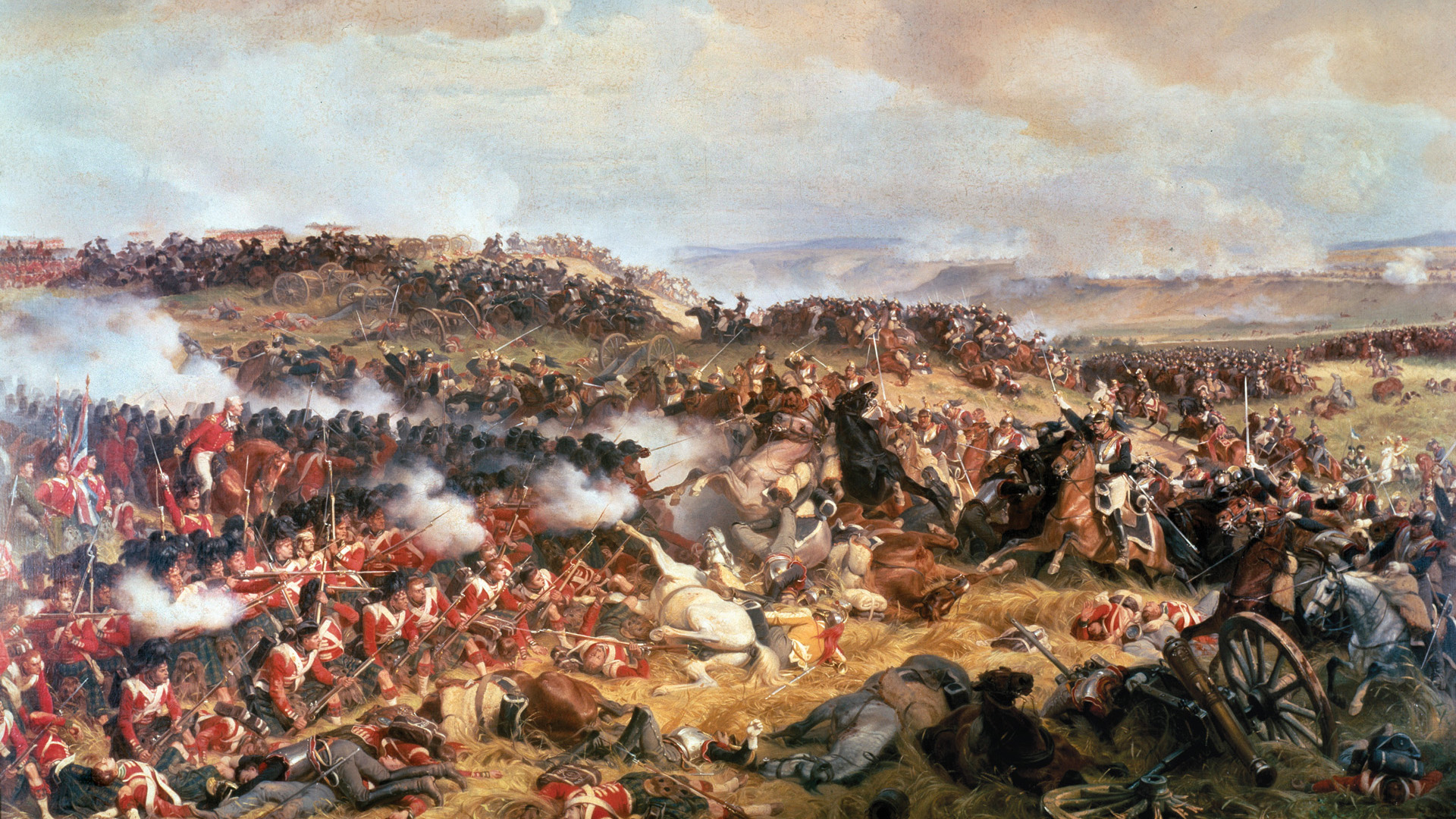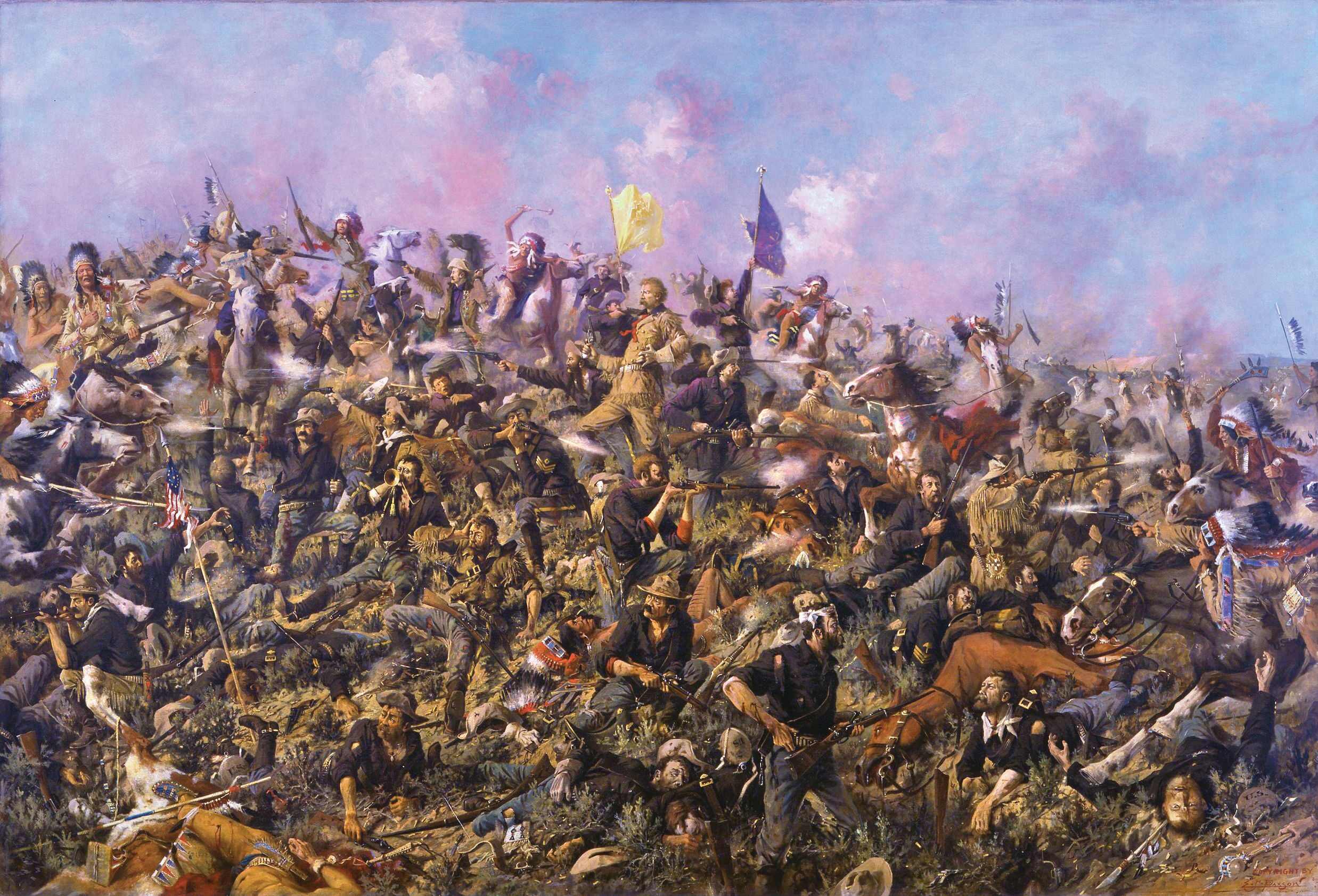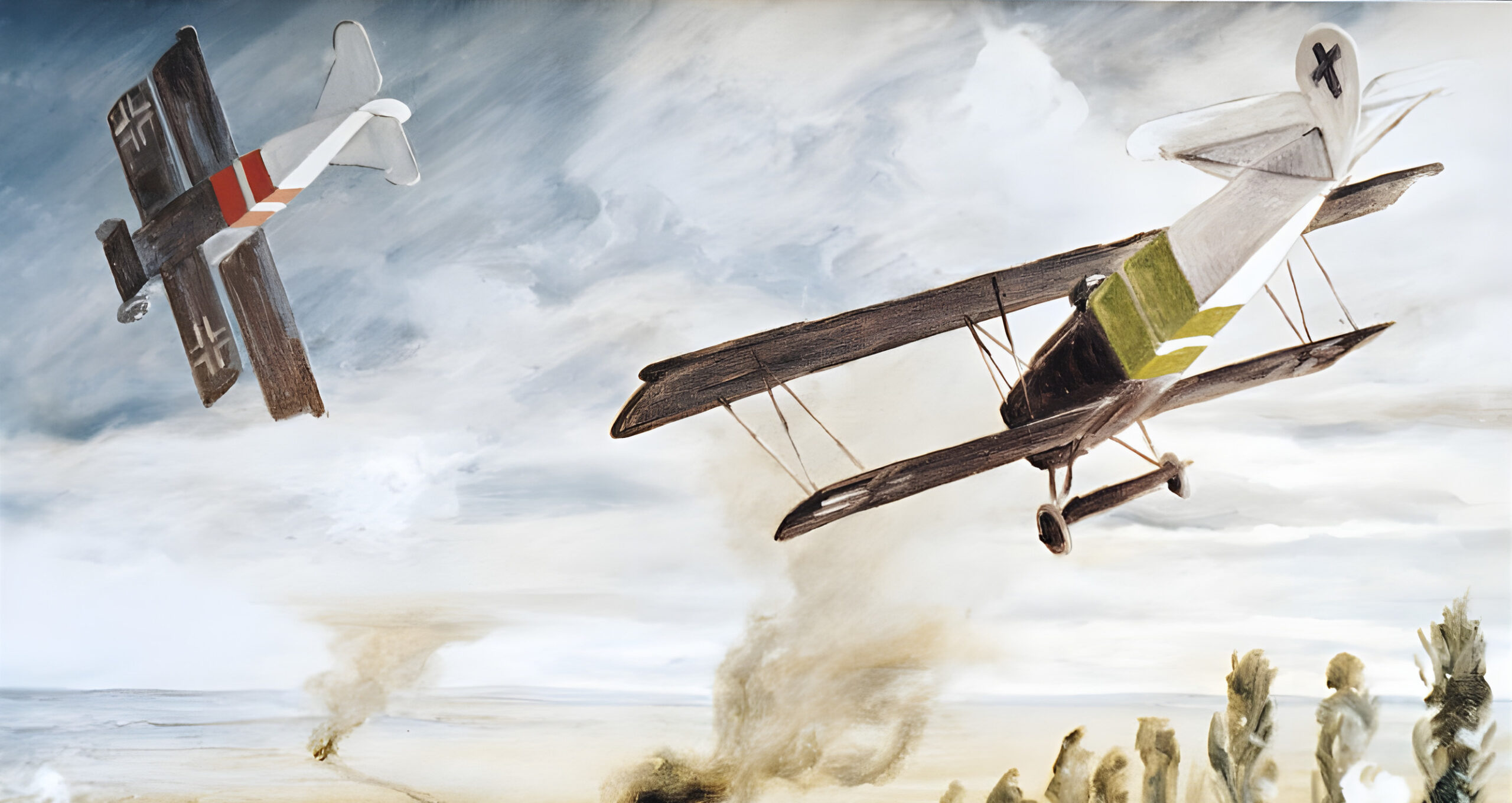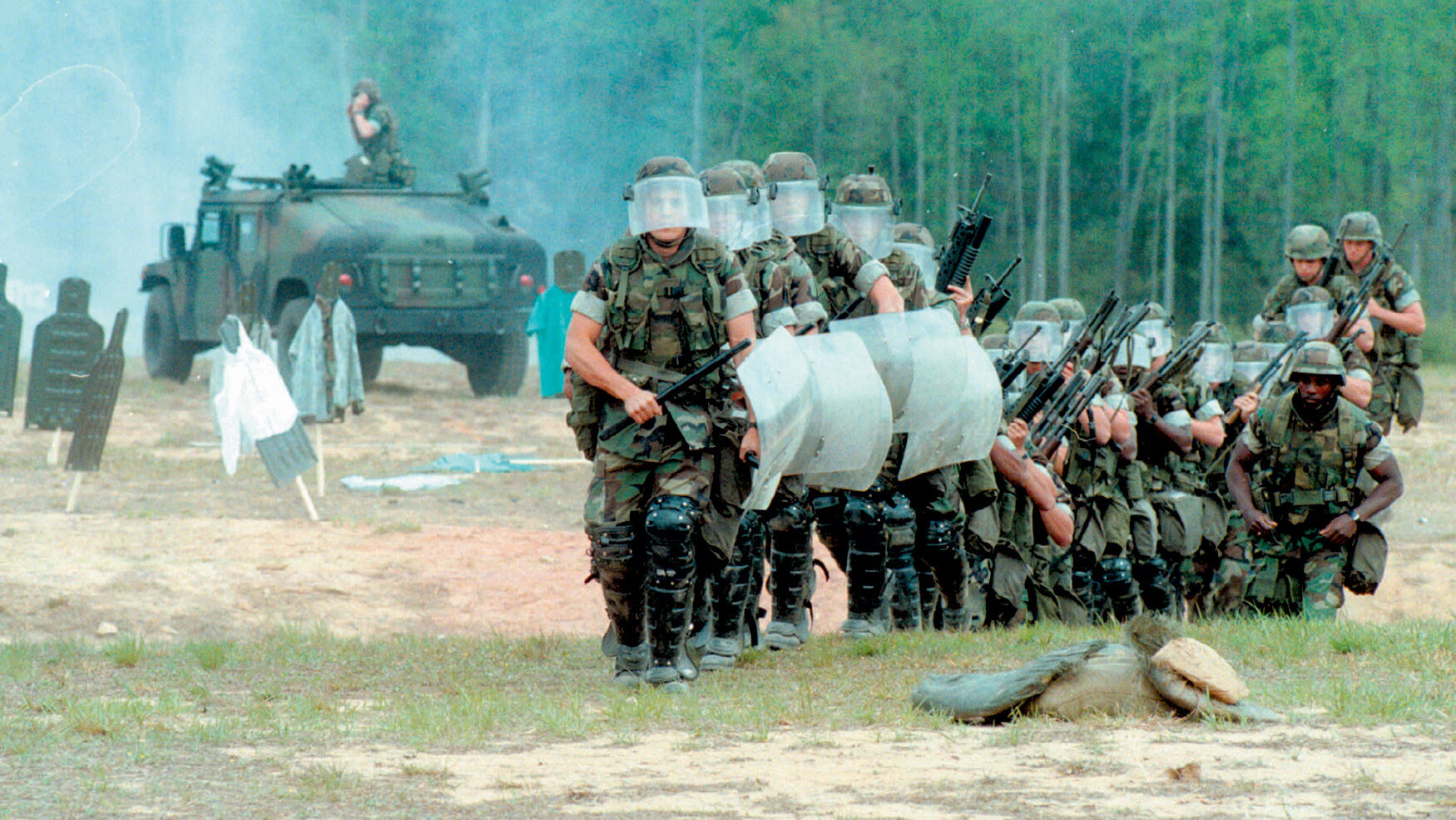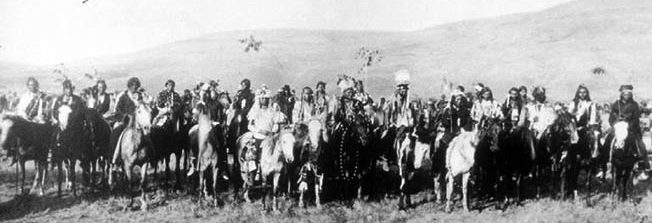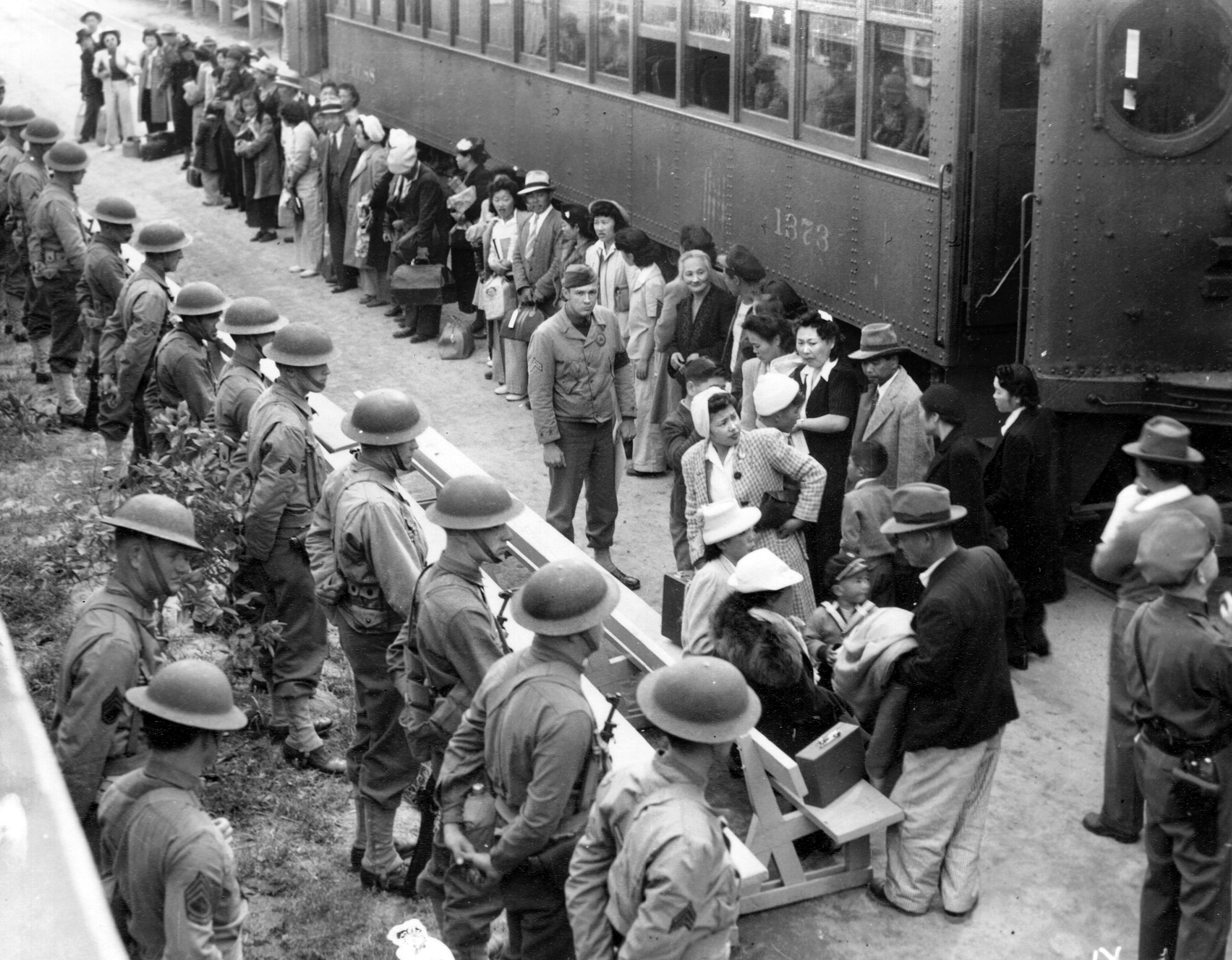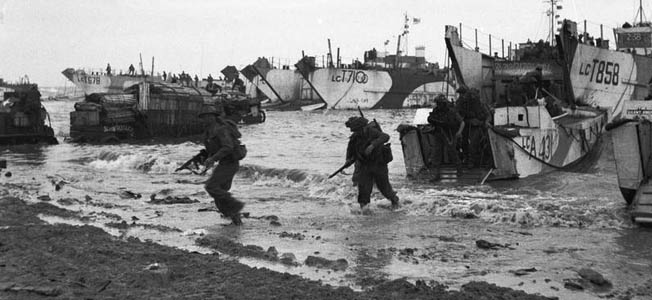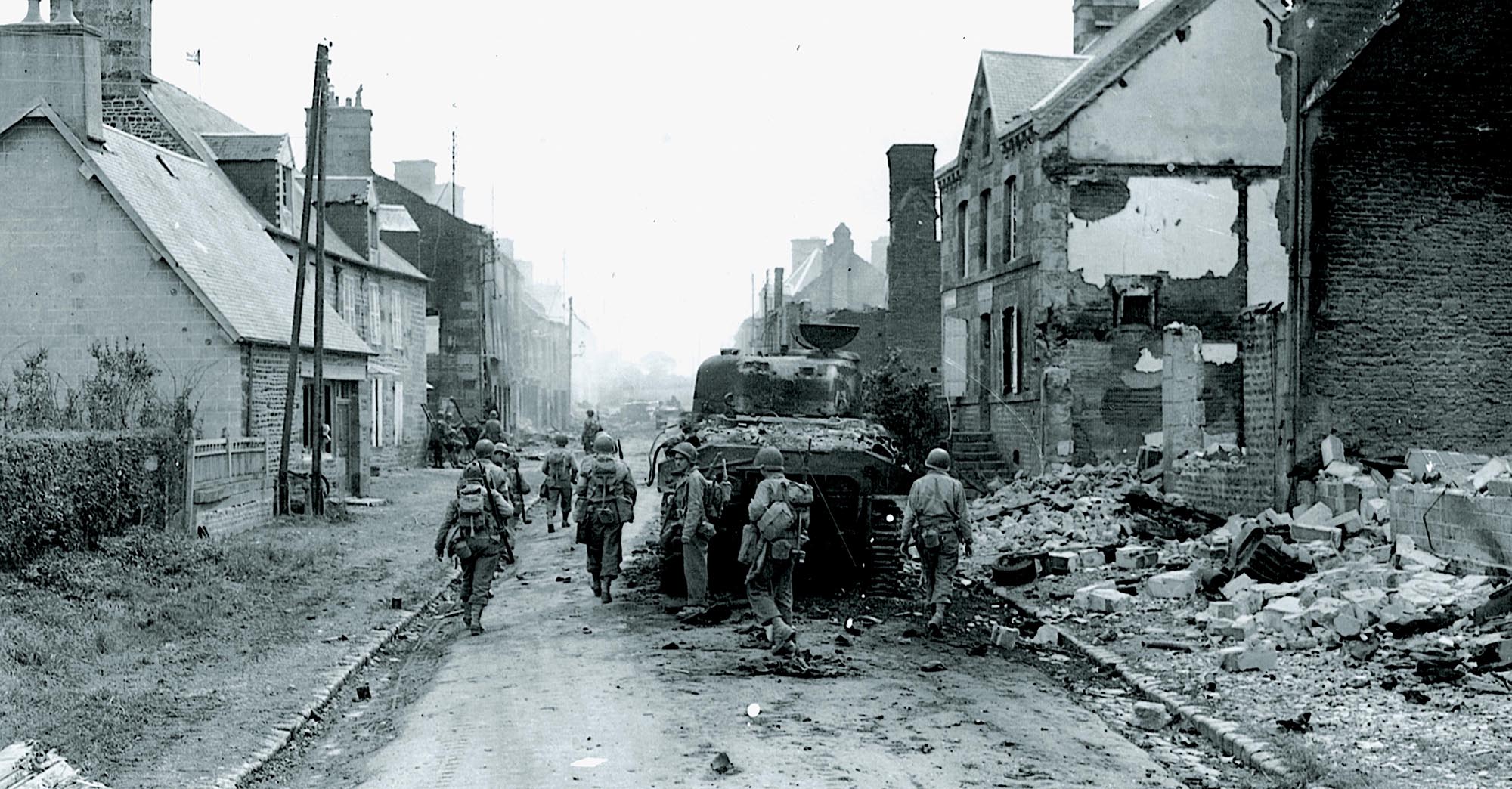By Eric Niderost
Peter Drake was a cavalryman, but at the moment he was standing near his horse’s head, holding his mount’s bridle and calming the beast when the animal grew restless after a night of inactivity. It was the predawn hours of September 11, 1709, and Drake was a trooper in the Gendarmes, a cavalry unit in the army of King Louis XIV of France. The cavalryman was Irish by birth, English in ancestry, and a soldier of fortune by trade. He changed sides as easily as changing clothes, but in the 18th century, men like him commonly filled the ranks of every nation’s army.
The orders were to be on the alert all night, and into the next day. Troopers like Drake were ordered to stand by their mounts, and thus be ready to swing into the saddle at a moment’s notice. It had been a long night, and when the sky lightened the area was shrouded by a dense, clammy fog, the thickest fog Drake had ever seen in his life. It was tedious to be standing there for hours, but his mood brightened considerably when he and the other troops on the front lines received their bread rations. Many of them had not eaten for two days.
Drake was in the Spanish Netherlands near an obscure village named Malplaquet, which was situated about 60 miles southwest of Brussels. Before the day was over, the hamlet was to be famous as the site of a major battle, a fame that was written in blood as the costliest battle of the 18th century. But that was still in the future. Drake and 80,000 French troops were waiting to be attacked by the Grand Alliance’s multinational army led by John Churchill, First Duke of Marlborough, and Prince Eugene of Savoy. The two men were acknowledged as the greatest generals of their age. Would it be possible for the French to defeat an army led by such gifted and proven commanders? Only time would tell.
Malplaquet was a battle in the long and drawn-out conflict known to history as the War of the Spanish Succession. It had its roots in a succession crisis brought on by the death of the last Spanish Hapsburg, Charles II. The Spanish king was the product of generations of inbreeding, and even his mother was his father’s niece. As a result of his unfortunate heritage, Charles had a host of physical, and, some say, mental disabilities.
Charles amazed all Europe by continuing to live, but at last he succumbed in November 1700 at the age of only 38. In a sense, Charles’s multiple disabilities and ailments were a metaphor for Spain itself, which was in sharp decline as a major power. The country may have been in decay– its government corrupt and bureaucratic, its economy in ruins–yet it was still the seat of a mighty empire; its far-flung territories were still rich enough for other European powers to covet them, eager to snatch them away from Spain’s feeble grasp. Spain had territories in the Spanish Netherlands, Italy, and, above all, its still vast territories in the New World.
Charles left a will that bequeathed the Spanish throne to the Phillip of Anjou, the 16-year-old grandson of an aging but still powerful Louis XIV of France, who was known as the Sun King for having chosen the sun as his personal symbol. In the coming months there were fevered negotiations, but when the dust settled Leopold of Austria, who was also the Holy Roman Emperor, put forward his own claimant in the person of his son Charles. Initially England was indifferent to these squabbles, but things changed when the exiled Stuart king James II died and Louis XIV recognized his son as legitimate king of England.
The result was that a Grand Alliance of England (Great Britain after 1707), the Holy Roman Empire (hereditary Habsburg lands and large sections of modern-day Germany), and the United Provinces (The Netherlands) declared war against France. France had fewer allies in the conflict, including Bavaria and the Elector of Cologne.
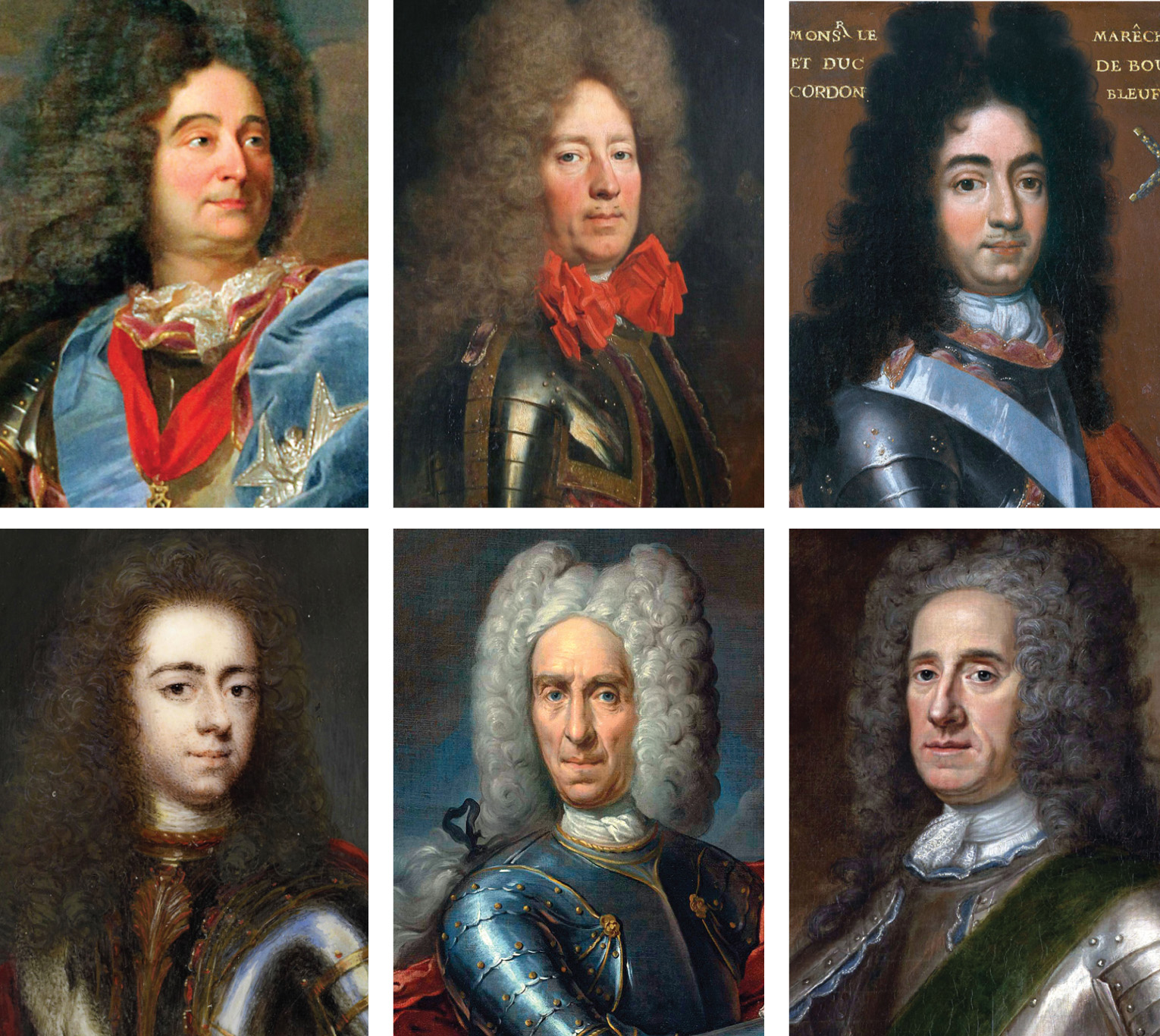
It was during the course of this war that the Duke of Marlborough emerged as the greatest commander Britain had ever produced. The only other possible candidate is Arthur Wellesley, First Duke of Wellington, who showed brilliance in the Napoleonic wars. Both were superb tacticians and master strategists, but Marlborough had a clear edge on Wellington when it came to politics and diplomacy.
Marlborough’s wife Sarah was a close confidant of Britain’s ruling Queen Anne. Sarah possessed a strong will and a violent and sometimes-implacable temper. They had a genuine love match, and only the duke was able to weather her tantrums with good humor and equanimity. These domestic qualities carried over to the world of politics and diplomacy. Marlborough had to deal with allies who had nothing in common, save a mutual antipathy towards Louis XIV.
The Dutch naturally wanted the main theater of operations to be in Flanders near their own border. As for the various German princes of the Holy Roman Empire, their main concern was the Rhine region, where Louis might try to further extend his influence. The Austrian Habsburgs had dynastic concerns; they wanted their candidate on the Spanish throne. As far as immediate threats, the Austrians feared French control of Northern Italy, which they considered their own sphere of influence.
Faced with these matters, and with foreign dignitaries who had monumental egos and sometimes quarrelsome natures, Marlborough’s patience and tact kept the fragile coalition from breaking apart. The duke also displayed military genius in a series of victories that established him as one of the great captains of history. He had vanquished the French at Blenheim in 1704. Of all his battles, Blenheim is considered his greatest victory and signature triumph. He subsequently defeated the French again at both Ramillies in 1706 and Oudenaarde in 1708.
By 1708 France’s star seemed on the ebb. By that time, the Sun King’s light of glory was dimmed, even eclipsed, by successive defeats. Europe experienced the coldest winter in centuries in 1708-1709. Rabbits froze in their burrows, and squirrels and birds dropped frozen from the trees. The canals of Venice sheeted over in ice, and even bays and inlets along the Atlantic coast were covered in ice. All Europe suffered, but France, already reeling from defeat, was particularly hard hit.
The frigid temperatures froze the windmill sails of gristmills in their lower sockets, so that no grain could be ground. As a result, the French people starved. Farm and domestic animals perished, and in Versailles Palace the king’s wine froze in the cellar. Louis was subdued, and when spring came, he ordered his peace negotiators to yield to every Allied demand. But the Allies, who had grown arrogant and were determined to further humiliate France, overplayed their hand. They demanded that the French monarch provide troops to overthrow his grandson, who ironically was largely supported by the Spanish people. The king rejected these terms, and his people by and large agreed.
The main theater of war became northern France and the lands that constitute modern-day Belgium. The Duke of Marlborough had every intention of marching on Paris, but first a number of fortress towns along the French-Belgian border had to be captured. Most of these fortresses had been designed by the great French engineer Sebastien Le Prestre de Vauban and were sure to prove hard nuts to crack. Marlborough accepted siege warfare as part of the game, but he also was modern in his strategic thinking. The duke often sought to achieve his objectives by decisive victories over the enemy’s main army in the field. But the many fortresses in the region blocked main avenues of advance. They were often located on major waterways, which served as important avenues for the movement of ammunition, guns, and food stories in an age where roads were miserable at best; in short, these fortress towns could not be ignored.
Marlborough and Eugene decided on a sweep eastward, their first objective the fortress of Tournai. The fighting at Tournai was a protracted and bloody affair, with both sides performing prodigies of valor deep within the bowels of the earth. The defenders mined; the besiegers countermined. When the besiegers broke into the French defenders’ subterranean galleries, savage battles ensued with a continual artillery fire that eventually gave way to desperate hand-to-hand fighting with sword and pistol.
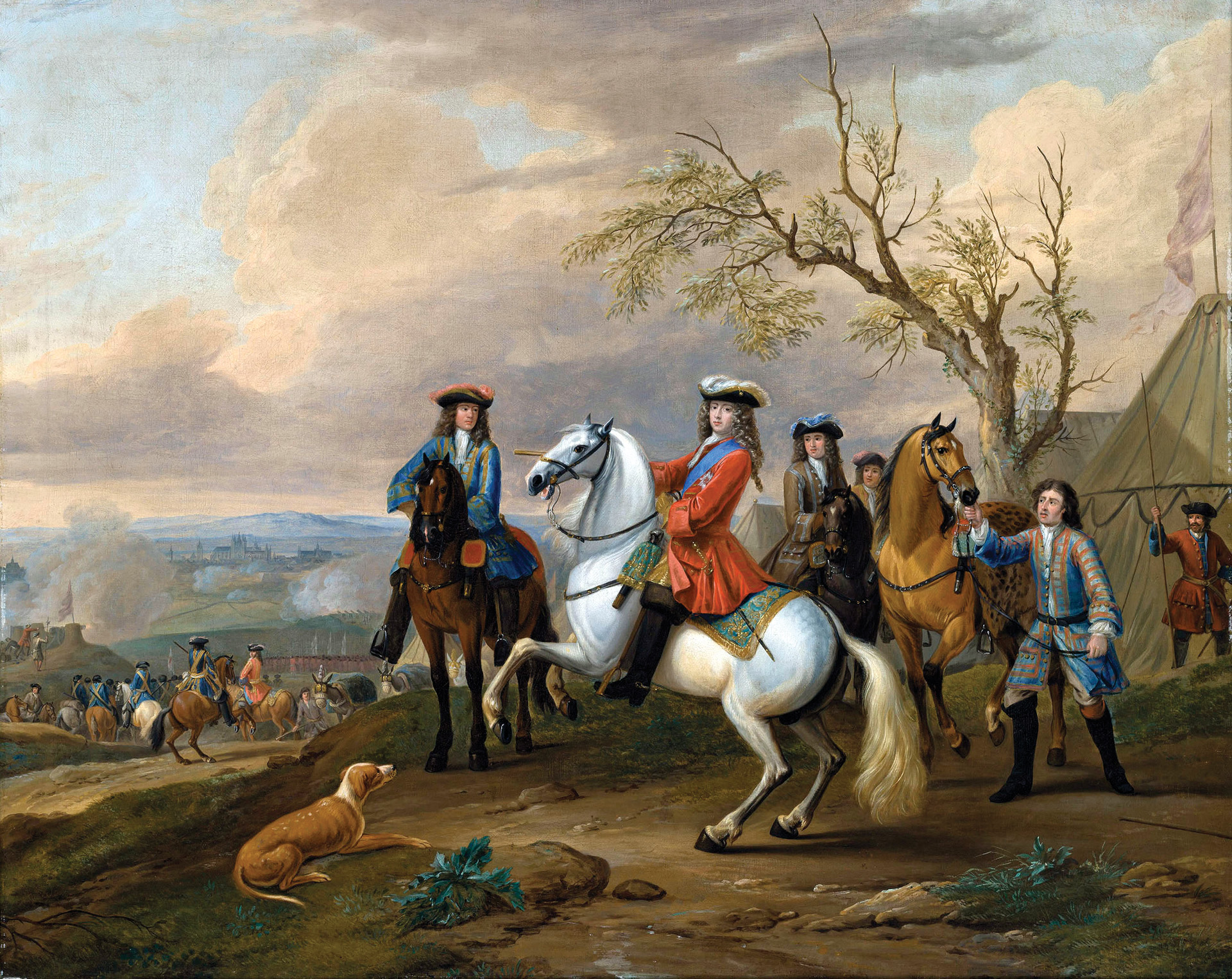
The siege of Tournai began in June and ended in early September. The garrison was given the honors of war. This entailed a proud march out of the city with drums beating and flags flying. The defeated garrison was free to rejoin the main French army. Tournai had been a costly affair, with 5,400 Allied casualties against 3,800 French casualties. The Allied army advanced to Mons, another important fortress town.
By that time, the French army had a new commander in the person of Claude Louis Hector de Villars, Marshal of France and Duc de Villars. Villars was boastful, and covetous of high honors, but an honorable man who possessed both moral and physical courage. He was also a highly skilled soldier, and a solid, if not brilliant, general. Villars knew Marlborough was a man of exceptional abilities, but there was a certain pattern to the tactics he used in his celebrated victories. The French marshal was determined to counter these moves and perhaps turn the tables on his opponent.
In his orders to Villars, the Sun King expressed his wishes in no uncertain terms. “Should Mons suffer the same fate as Tournai, our case is undone; you are by every means in your power to relieve the garrison; the cost is not to be considered; the salvation of France is at stake,” the king wrote. Villars knew the task before him was enormous, but he did not shrink from the responsibilities. Upon his arrival, he had noted that the “troops were in a deplorable condition—without clothes, arms or bread.” He managed to turn things around, and soon supplies were flowing into the French camp.
But what the French army needed most of all was a boost in morale. Villars’s self-confidence soon spread throughout the ranks. Little gestures, like the way he ate the same meager rations as common soldiers, also was appreciated. With foreign armies poised to invade France, aristocratic officers and peasant soldiers could find a common cause in love of country. It was the first stirrings of nationalism, a force that would prove so potent almost a century later in the French Revolution.
Villars also assembled the troops and gave a stirring speech, asking the officers and men if they would not wish to avenge the honor of the king which his enemies were insulting. A moment later, he asked for cheers, and they responded with a mighty roar of approval, at the same time throwing their hats into the air. “Vive le Roi” and “Vive Villars!” erupted from thousands of throats. Gratified by the rousing cheers, Villars threw his own hat into the air in response.
Marlborough and Eugene wanted to tempt Villars into the open plan of Mons, but the French marshal was too much the Gallic fox to take that particular bait; instead, he opted to choose his own ground for a defensive battle that he felt he had a chance of winning. About nine miles from Mons there were some patches of forest that seemed made to order. The Bois de Sars, sometimes called Bois de Taisnieres, was a thickly wooded area that was separated by the Bois de Lainieres by an open space called the Aulnois gap roughly two miles wide. Villars placed his army in the Aulnois gap, with the Sars Woods guarding the left flank and Lainieres Woods guarding the right.
The trick now was to create a formidable defensive position from such promising raw material. The open Aulnois gap that comprised the French center was filled with field works and entrenchments. Sources are conflicted as to how many redoubts there were. There were at least five, and some accounts state there were a total of nine. The breastworks and earthworks continued into the two flanking woods, and in some places this arrangement would produce superb enfilading fire. This was particularly true in the Sars Woods segment, where a section of trees jutted out to form a salient. The French constructed earthworks that followed the edge of these woods and their natural contours. The result was a tongue-shaped salient that soon acquired the name The Triangle.
Villars literally had his men working day and night, and the woods rang with the sound of biting axes and the crash of felled trees. As added protection abattis were placed in front of the earthworks. These were dense clumps of brush, augmented by felled logs chained together and sharpened on one side, the points facing the enemy. In addition, the French concealed a 20-gun battery in a small depression in the ground near the village of Aulnois. This was yet another trick up Villar’s sleeve that would serve to provide excellent enfilade fire when an opportunity presented itself.
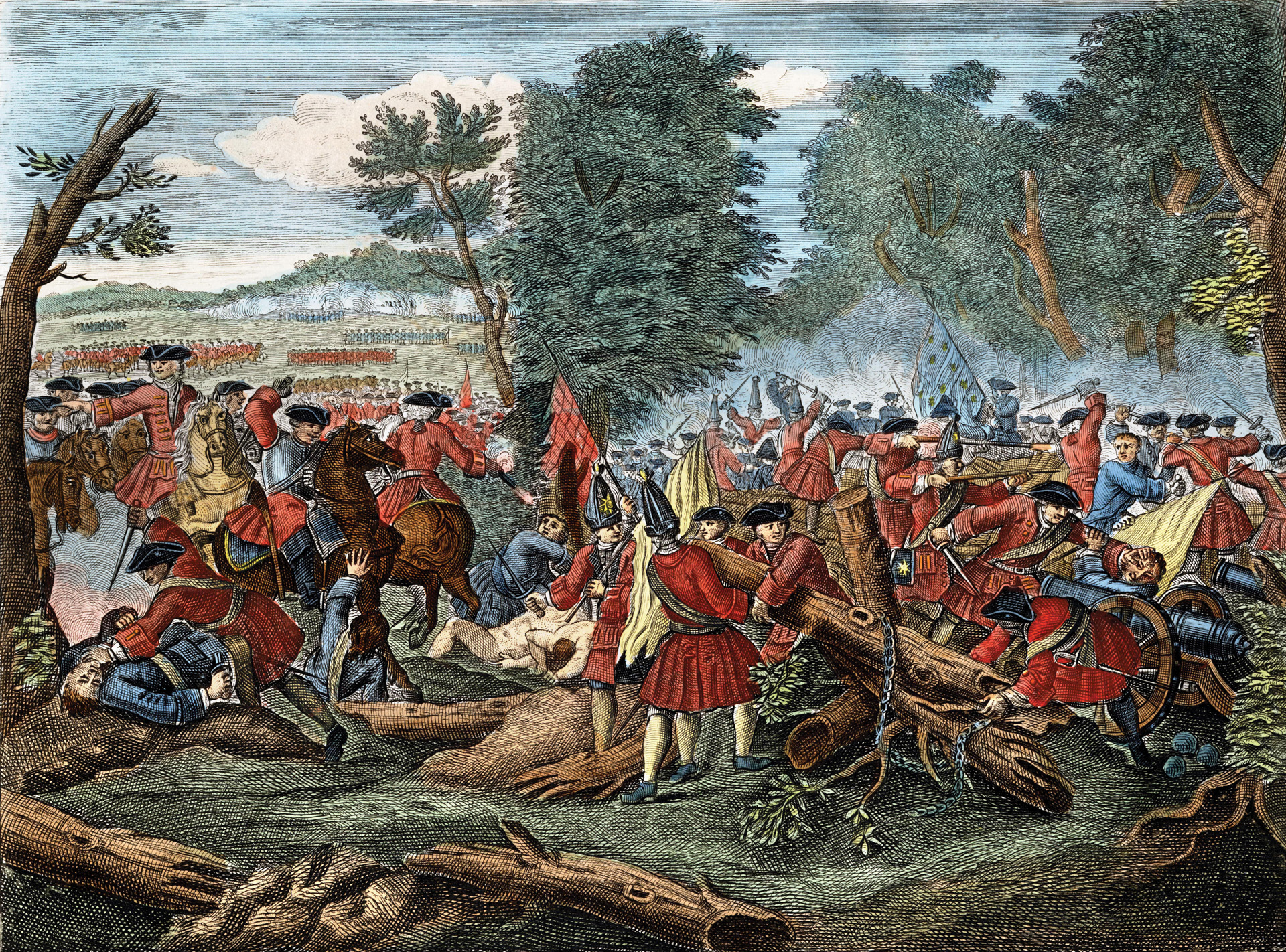
It is here that controversy enters the narrative. The two opposing armies were drawn up facing each other on Monday, September 9, well before Villars began to fortify his position. According to some accounts, Marlborough, ever the aggressor, wanted to attack immediately, but was dissuaded or perhaps even forced, to delay. Other accounts insist it was the Dutch were insisted to err on the side of caution. Unless new documents surface, we may never know. There was a council of war that ended up deciding it was best to delay, allowing additional troops to come up from Tournai.
Whatever the case, the Allies did not attack Monday and also let all of Tuesday slip by without incident. It was a heaven-sent opportunity for Villars, who kept his men feverishly working in relays without a stop. Marlborough and Eugene reconnoitered the French positions on Tuesday, September 10, and did not like what they saw. The French fortifications were getting stronger by the hour, but the celebrated partners were still supremely confident.
Marlborough planned his attack in detail. It would commence in the early morning hours of Wednesday, September 11, 1709. There would be heavy attacks on the French left and right flanks, forcing the French send troops from their center to counter the twin threats. When the French center—in this case, the line of fortifications that spanned the Alnois Gap—was sufficiently weakened, it would be time to administer the coup de grace with George Hamilton, First Earl of Orkney’s troops. Orkney commanded the Allied center. His force consisted of 15 battalions of infantry supported by 179 squadrons of cavalry.
No fewer than 11 of Orkney’s battalions were British, a red-coated skein that connected the Allied right and left flanks. The British troops were some of the nation’s finest, elite forces who in some cases were still in the very beginning of their illustrious careers. There were six companies of Coldstream Guards, and also several companies of the First Foot Guards. In years to come the latter unit would become renowned as the Grenadier Guards.
The battle began when the Allied right wing attacked French positions in the Sars Woods. Man-made defenses were supported by thick underbrush and a verdant tangle of trees and overhanging branches. Such growth formed natural obstacles that were particularly formidable in an era when troops fought in well ordered, serried ranks. Forest trees would act as natural sieves, breaking up formations and in some circumstances forcing soldiers who were trained to fight in a collective manner to fight individually.
General John Mathias, Reichsgrafen von der Schulenburg had tactical command of the Allied right, though Prince Eugene was on horseback nearby overseeing the operation. Schulenberg had 40 battalions under his immediate control, and his Sars Woods assault included the northern, left side of The Triangle. Initially there were no British troops taking part in the Schulenburg effort, whose command was largely Imperials; that is, troops from the small German states of the Holy Roman Empire, as well as Prussians.
The southernmost right side of the Sars Woods and The Triangle would be attacked by the Graf Philip Carl von Wylick und Lottum and his 22 battalions of Prussians, Danes, Saxons, and Hessians. Lottum’s infantry would be supported by a 40-gun battery and 39 cavalry squadrons under the Prince of Auvergne. The Allied right was led by 22-year-old John William Friso, Prince of Orange. The young prince was a competent soldier, brave as a lion, but appeared to have been assigned battlefield responsibilities that were beyond his limited experience.
French morale was significantly boosted when Marshal Louis Francis, Duc d’Boufflers, showed up in camp with his cuirass. It was a signal the old campaigner was ready for action, and in a generous gesture he offered to place himself under Villar’s command. Villars, no doubt touched by this gesture of confidence and solidarity, gave Boufflers the command of the French right wing.
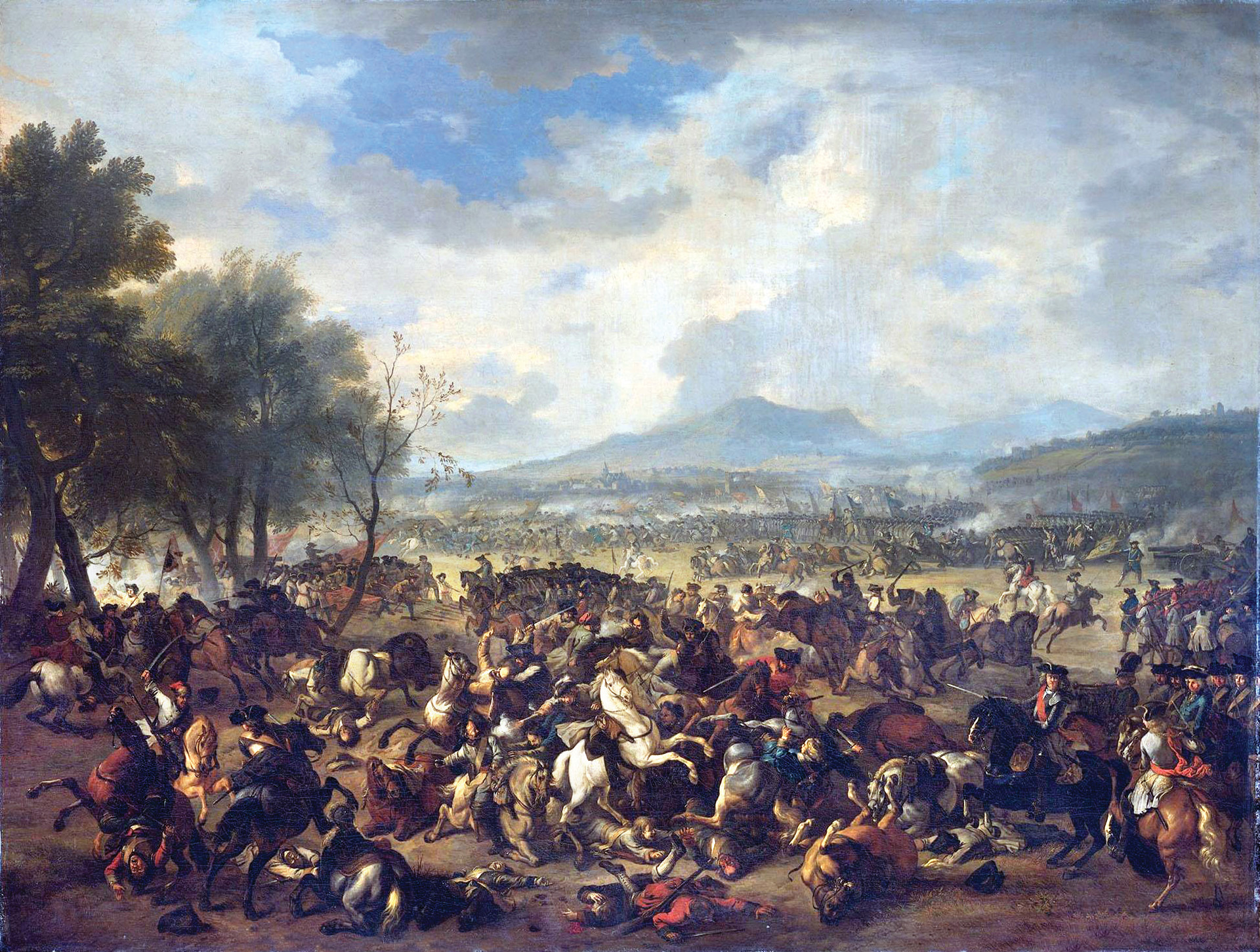
The final French defensive arrangements were everything that Villars had hoped for and more. The French right was anchored in the Laniere Woods and went as far and the fields in front of Malplaquet village. Immediate control of the defense was given to Pierre de Montesquiou d’Artagnan. If the name is familiar, it is because his cousin Count d’Artagnan was used as a heavily fictionalized role model for Alexandre Dumas’ 19th-century adventure novel The Three Musketeers.
The French right was manned by some of the most celebrated units in the royal French army, including the Picardy, Bourbonnais, Navarre, and Piedmont regiments, as well as the French Royal Marines. A few red-coated Swiss mercenaries rounded out d’Artagnan’s command, together with the blue-coated French Guards.
The French center, which consisted of the two-mile-long string of entrenchments and redoubts, was garrisoned by a polyglot force almost as diverse and the Allied army that was about to attack them. The force was composed of the two Irish Brigades of Lee and O’Brien, German mercenaries from Bavaria and Cologne, Alsatian troops, and a brigade from the northern French city of Laon. The center’s massed musketry would be supplemented by 30 cannon that were placed in possessions along the line.
The Gallic left, anchored by the Sars Woods, also boasted entrenchments and a significant number of French regular regiments, like the Champagne Regiment, the Picardy Regiment, and the French Marines, among others. Champagne and Picardy were part of the Vieux Corps, also known as the Old Corps, first raised in 1569 and considered the senior regiments of the royal army. They had long and distinguished histories and were determined not to yield a foot of ground without a stubborn fight.
The entrenched infantry units of the French front line were backed up by large bodies of cavalry. The Maison du Roy (Household Cavalry) deployed on the right near the Laniere Woods, the Gendarmes (Peter Drake’s regiment) in the center, and the Carabiniers on the left. There were gaps in the center redoubts to allow cavalry to take the offensive. The ever-optimistic Villars hoped that, if the tide of battle turned against the Allies, the French cavalry could complete the victory. The French were still outnumbered, with 80,000 men opposite the Allied host of 110,000, but Villars hoped his entrenchments and well-placed batteries would redress the imbalance.
The morning fog allowed the Allies get into position, and from the French point of view the flanking woods were both a hindrance as well as a help, since they could not see enemy movements. The sun finally started to pierce through the fog, and about 8:30 am on Wednesday, September 11, 1709, the cannon from Marlborough’s great center battery roared to life. It was a signal that the battle of Malplaquet was about to begin.
Marlborough and Eugene agreed the first major assault would be with Schulenburg’s advance into the Sars woods. At first the trees still obscured Schulenburg’s soldiers from French view, but the defenders could plainly hear the Allied drummers beating martial airs, throbbing tattoos that echoed through the trees and grew louder as the infantry approached. Lord Orkney, watching from the Allied center, was thrilled at the unfolding spectacle. He exulted at what he deemed the “noble sight [of] so many different bodies marching over the plain to attack a thick wood where you could see no men.”
The woods thinned enough that you could see the advancing ranks, and in their formation, they made splendid targets as they drew near. The French emplacements, ominously silent, suddenly erupted in an ear-splitting wave of smoke and flame as the white-garbed soldiers simultaneously discharged their muskets. This first volley annihilated Schulenburg’s first rank instantly felled by the unnatural storm of lead. The crumpled bodies—some dead, others wounded and writhing in pain—formed a barrier that the second and third ranks found hard if not impossible to step over.
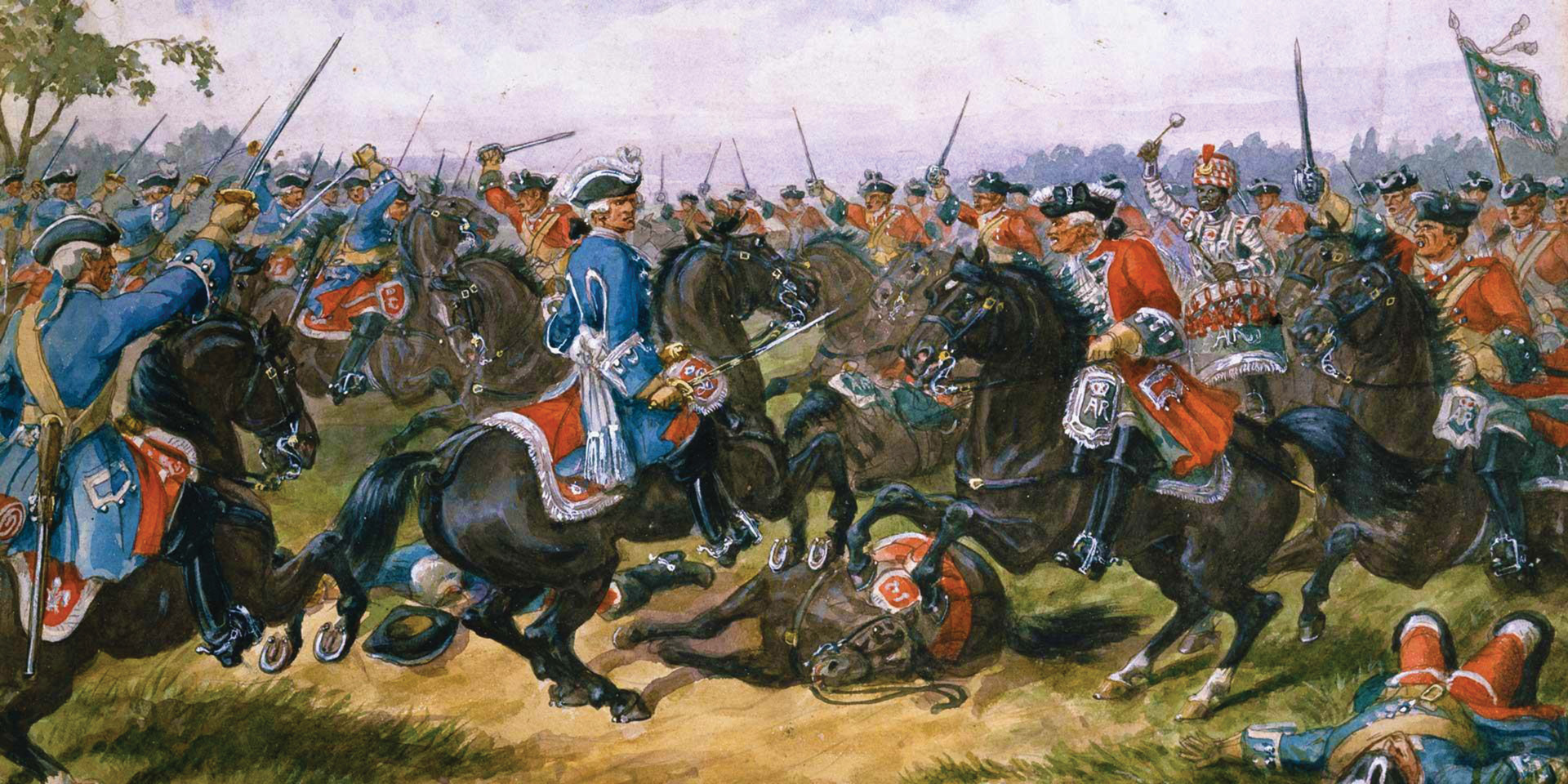
As the second rank tried to stumble over their dead and wounded comrades, they were hit by a second, and equally deadly, French volley. The attacking allied soldiers, chiefly Germans, were known for their discipline, but flesh and blood could only stand so much. The soldiers lost cohesion and began to fall back as more French musket balls peppered their floundering ranks. Schulenburg’s attack was a bloody and dismal failure. The general, undeterred, formed his men up and attempted a second attack. This too was bloodily repulsed.
On the other side of the Sars Woods salient, Lottum began his advance. His Prussians in their dark blue uniforms stood out against the verdant plains and fields. At first, they marched towards the French center, and then veered to the right to plunge into the edge of The Triangle. The change of direction proved their undoing. Watching their movements, French artillery commander Saint-Hilaire rushed forward a 14-gun battery to hit them in the flank. The enfilade fire plowed cannonballs through whole ranks as if the men were bowling pins in a macabre game of life and death.
Lottum’s men were further impeded by boggy, viscous ground made swampy by a rivulet that meandered on the edge of the Sars Woods. Villars was present, encouraging and inspiring the defense, so with great effort the allied troops were once again forced to retire. Marlborough took Lottum’s men in hand, personally leading them forward in a hurricane of cannonballs and musket lead. A number got as far as the abattis that formed a protective barrier in front of the entrenchments. They scrambled among the chained logs and pulled away the brush and branches with their bare hands, all under a heavy fire.
After bitter fighting, Lottum’s soldiers managed to reach the entrenchments, and even get a toehold in the French fortifications. Caught between two fires, the Schulenburg attack on one side of the salient and the Lottum attack on the other, the French had no choice but to focus more resources on the Prussian threat.
The events on the Allied left are still hotly debated to this day, a controversy that has not abated in 300 years. The main controversy centers on the actions and orders of the Prince of Orange. Marlborough apologists maintain that the prince’s orders were to stage a feint, to distract the French from the main effort on the Sars Forest. Other experts on the battle disagree, saying both right and left attacks were to be carried out with equal vigor, the better to weaken the French center and achieve the desired breakthrough to victory.
The Prince of Orange had arrived on the field of battle with 49 battalions and 32 squadrons, but just before the fighting began 19 battalions under British General Henry Withers had been diverted to the extreme allied right wing to be used in a flanking attack against the left and rear of the French line. Nevertheless, the French outnumbered him in this sector, and he was not going against raw recruits, but rather the flower of Louis XIV’s royal army.
Earlier than morning, the prince halted his command just out of range of French grapeshot. He was supposed to launch his assault a half an hour after Schulenburg and Lottum made their efforts on the Allied right. It was mid-morning when the Prince ordered his battalions forward, and from the start it was obvious the young general conceived this as an all-out effort, not a mere containment or feint. He had some senior generals with him, notably Claude Frederick T’Serclaes, Count Tilly. These older and wiser heads were supposed to curb his youthful enthusiasm, but the prince did not bother to consult them.
The Prince had Dutch, Swiss, and Scottish troops under his command; the latter were in Dutch service, not on loan from Marlborough and the British. Orange was leading some of the finest soldiers that Holland ever produced. The most notable of these was the Blue Guards, which once were elite bodyguards of the late King William III of England. Their nickname derived from their colorful uniforms, but there was real substance beneath the show.
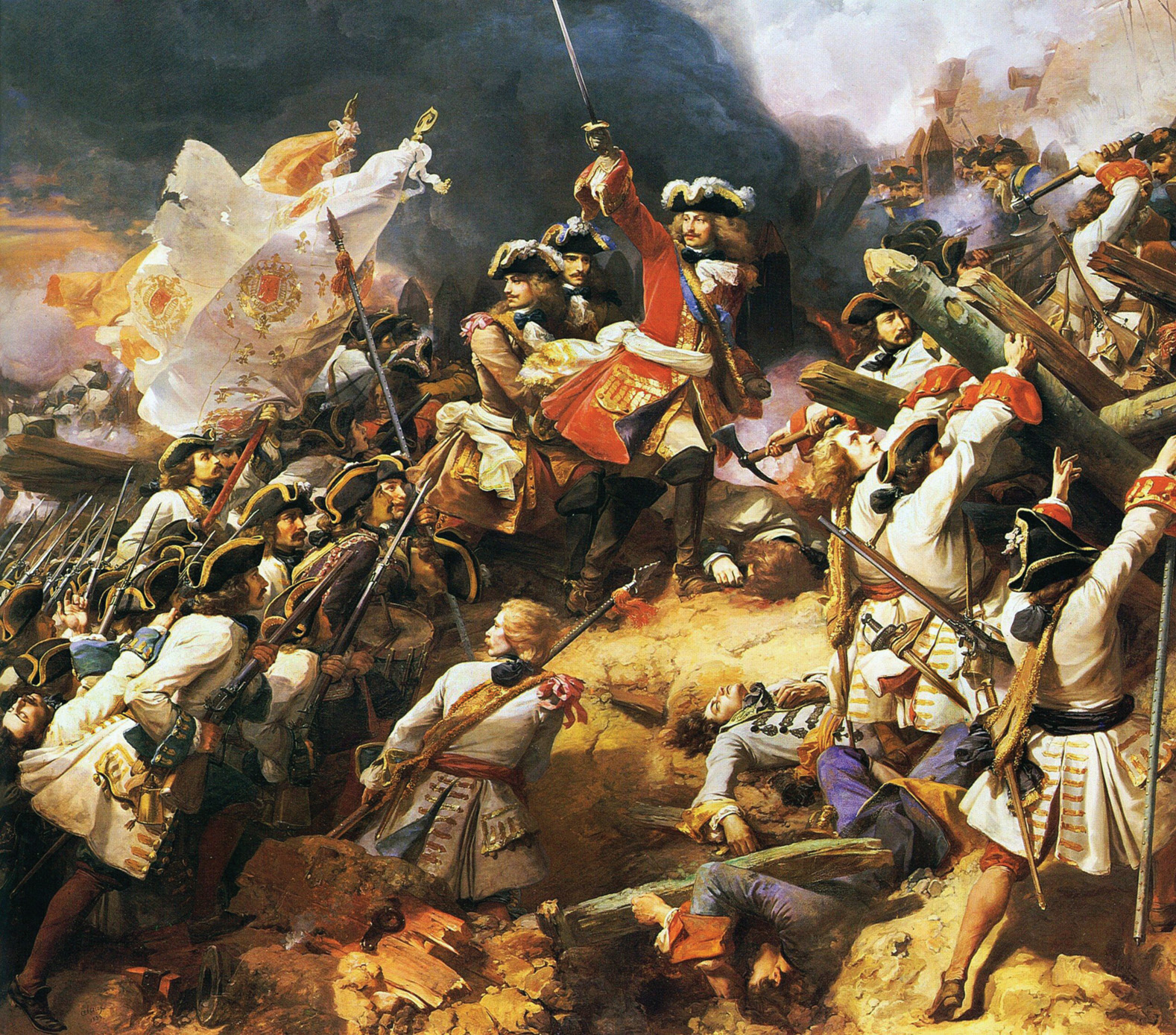
The prince’s main effort was the French entrenchments along the Lanieres Woods, defended by General D’Artagnan’s proud regiments. As soon as the bluecoats came within range French cannon opened up with a deafening roar. Great gouts of flame spouted out of cannon muzzles, thunderous eruptions that also produced dense clouds of grayish white smoke. Grapeshot and cannonballs—their use determined by the range—did fearful execution, but the troops pressed on.
Orange himself was in the thick of it. No less than two-thirds of the staff fell dead and wounded, and finally his horse was pierced by several bullets, collapsing in a bloodied heap. The prince, no doubt shaken from the sudden fall, simply dusted himself off and continued on foot. Massed French volleys from more than 3,000 muskets added to the carnage, but perhaps it was the artillery that was the most feared. Cannonballs could take off arms and legs with horrifying ease, and some saw their companions decapitated before their eyes.
The earth in front of the French entrenchments, once covered with natural vegetation, was now carpeted by blue-clad bodies and stained with blood. The Allied attack simply melted away, and the survivors fell back. The prince, miraculously unhurt, reformed his men and led them in a second attempt, but it was no more successful than the first. The bodies in front of the entrenchments piled as high as three deep.
The French, greatly encouraged, advanced for a counteroffensive and moved well beyond their entrenchments. Bayonets gleaming, they advanced steadily, their progress impeded by the grim harvest of Allied dead and wounded that carpeted the field. Clad in the white uniforms so distinctive of the French army, the soldiers could be distinguished by the colorful regimental flags they carried proudly with them. There was Navarre, with a white cross on a brown field, and Picardy, with a similar white cross by on a bright red field.
The French infantry advanced with their usual elan, but they were checked by cavalry under the Prince of Hesse Castel. Nevertheless, there was a brief moment where the French could conceivably have achieved a victory. If the French right had launched an all-out assault, the shattered Allied regiments under Orange probably could not have stopped them. But the overall commander, Marshal Bouffliers, hesitated. And the moment passed.
Marlborough, still with Lottum’s hard-fighting troops in the Sars Woods area on the Allied left, heard about the Dutch debacle on the right and was appalled. He rode over a mile across the battlefield to personally command the prince not to launch a third suicidal attack. It was just in the nick of time, because the brave and headstrong young royal was just about to do just that.
In the meantime, the Allied effort in the Sars Woods was finally coming to fruition. The French were being pushed out of the woods, though the Allies were taking very heavy casualties in the process. Villars, so prescient about Marlborough’s tactics, could see what was unfolding but could no nothing to alter the situation. Although bloodier, it was Blenheim again, for the allied flank attacks were so powerful and threatening Villars had no choice but to weaken his center to deal with them.
By 1:00 pm it was time for Lord Orkney to lead his British troops to take a weakened French center. The French guards still held the center, but they soon gave way before Orkney’s redcoats. The entrenchments were taken; to all intents and purposes, Villars’ position was split in two. Villars had just received the bad news about his center when a musket ball passed through his top high boot, penetrated below his left kneecap, and shattered the bone. He tried to remain in command, but soon collapsed from loss of blood. Command of the French army devolved to Boufflers.
With the center in Allied hands, and the two flanks collapsing, it was time for the French army to withdraw. Orders were given to retreat, but they retreated in good order, and even the common soldiers in ranks remained in good spirits. Some even cheered as if it was a great success. Bloodied but unbowed, the French knew that Malplaquet was a marginal victory at best for the Allies.
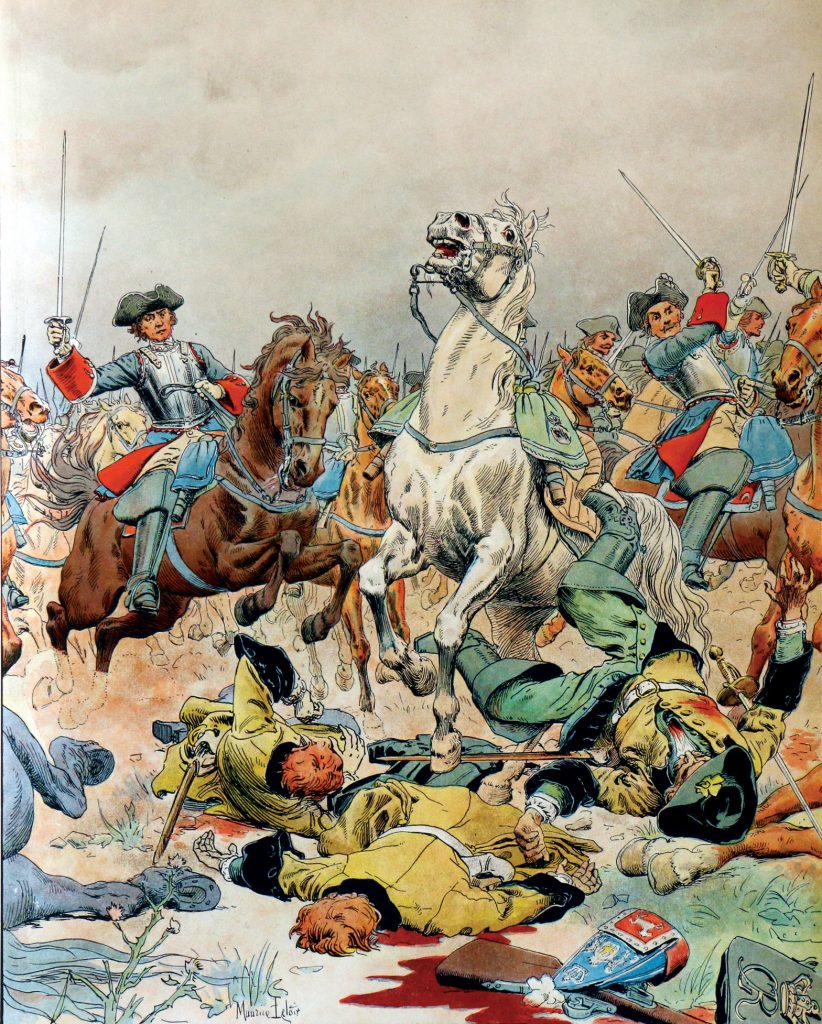
But the battle, though winding down, was not yet finished. Boufflers led a series of massive cavalry attacks against the Allied horse, beginning with General Auvergne’s Dutch cavalry. The tough, old marshal was leading the elite Maison du Roy cavalry, and at first the French horsemen would not be denied.
Boufflers’s galloping troopers swept the field, routing the Dutch, but moments later came up against Orkney’s British infantry. It proved a solid red wall that could not be breeched. One platoon volley after another from the redcoats soon sent the French cavalry packing. “I really believe, had not [the] foot had been there, they would have drove our horse from the field,” wrote Orkney. But Marshal Boufflers was not about to give up. He gathered more cavalry, and the Allies responded in kind. As many as 15,000 French and 25,000 Allied horsemen were in the field. Drake was in the midst of this melee, and was wounded several times. Suddenly, he found himself all alone in the midst of the enemy; having lost a lot of blood, he resolved to surrender.
When he rode up to an enemy officer and asked for quarter, the officer insulted him in German and fired a pistol at point blank range. Determined to sell his life dearly, Drake fired his carbine almost simultaneously with the German. “I shot the upper part of his head, and saw his brains come down,” wrote Drake. “His ball only grazed my shoulder.”
The dead German officer’s men began firing at Drake, but luckily the shots were wild, and they only dented his cuirass but did not penetrate it. He escaped and managed to ride over to a friendlier group of enemy cavalry, whose officer happily accepted his honorable surrender. Men like Drake often changed sides with little difficulty, and cared more for the adventure and money than any particular cause. It is indeed remarkable that in another year or two he would be fighting on the British side.
By the late afternoon, the French were fully withdrawn, but the victorious Allies too exhausted to render any effective pursuit. The fighting had been so intense it had been a kind of anesthesia. In the excitement and fear of battle, with adrenaline coursing through every participant’s veins, soldiers gave little heed of consequences. But when both officers and men could take stock, what they beheld appalled them Lanieres Woods and its immediate environs was a place of real horror, thickly carpeted with the bloody and torn bodies of Dutch, Swiss, German, and Scottish soldiers. The worst were the eviscerated corpses, heads or limbs missing, and entrails exposed for all to see.
But at least these men were dead and beyond pain. Thousands of wounded lay on the ground, suffering tormenting pain and thirst. The primitive medical arrangements of the time could scarcely gather them, much less give them adequate treatment. Thousands of dead and wounded horses also lay scattered about the battlefield, adding to the sheer horror of the scene. Malplaquet had the distinction of being the bloodiest battle of the 18th century. The butcher’s bill for the Allies was 25,000 casualties. The French, being on the defensive, suffered much fewer casulties, losing 12,000 men.
The great battle was a pyrrhic victory, and Villars was only speaking the truth when he informed the king of the battle’s heavy cost to France. “If it pleases God to give your enemies another such victory, they are undone,” wrote Villars. As for Marlborough, he put up a brave front, implying that his triumph would lead to final victory, but in the case the great duke was indulging in wishful thinking. And even the duke candidly admitted that Malplaquet was a “very murdering battle.”
The Duke of Marlborough’s fame and power rested on two great pillars. The first pillar was his military genius, and the second pillar was his political support at home. The political pillar was unstable, resting on the shifting sands of party politics and royal favor. Marlborough’s wife Sarah had been a close friend of Britain’s reigning monarch, Queen Anne, for thirty years. But Anne grew tired of Sarah’s sharp tongue and constant nagging, a nagging that often crossed the line into bullying. Sarah was eventually dismissed from the queen’s service, and Marlborough’s power weakened.
The queen and most of the country was sick of the endless campaigns by 1709, and the terrible news of Malplaquet hastened Marlborough’s fall and helped bring the anti-war Tory party to power. Marlborough was dismissed and Britain effectively withdrew from the conflict. Malplaquet was a French tactical defeat, but a strategic and political victory. It saved France from invasion, restored the honor of French arms, and stabilized Louis XIV’s throne.
Malplaquet has a curious musical postscript. The battle was so horrifically bloody that rumors spread in France that Marlborough had been killed there. That gave rise to a popular French tune, a song that tells the story about how his wife awaits his return, not knowing that he is dead. The title is “Marlborough s’en va-t-en Guerre” (Marlborough goes to war). It is sung to the tune that’s known to English speakers as “For he’s a Jolly Good Fellow.” It was said that French Emperor Napoleon would often be heard whistling this song to himself.
